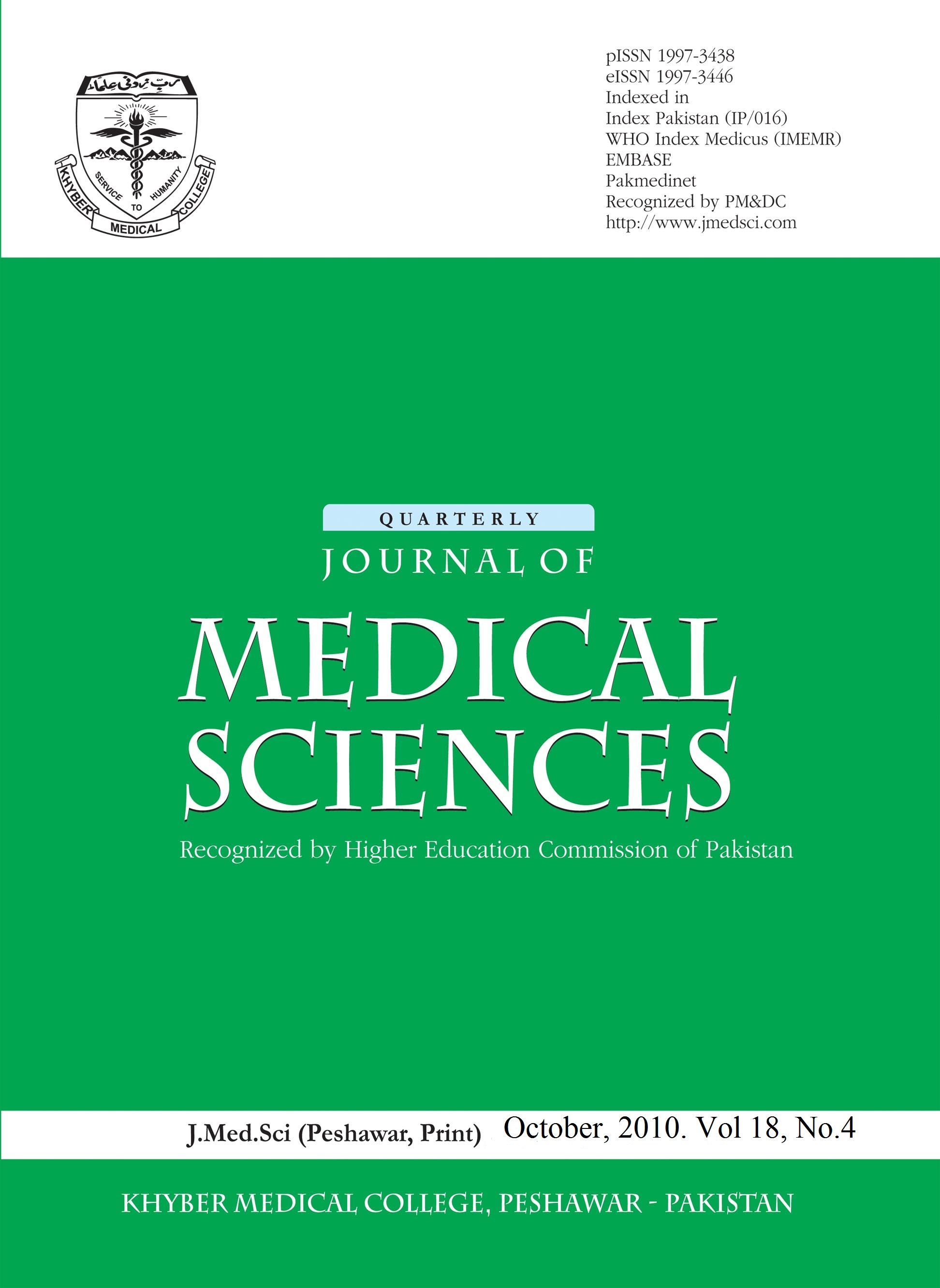PATTERN OF RENAL CELL CARCINOMA IN KHYBER PUKHTUNKHWA
Main Article Content
Abstract
Objectives: To observe the common patterns of renal cell carcinoma in patients presenting with renal mass at the
Institute of Kidney Diseases Hayatabad, Peshawar.
Material and Methods: 32 consecutive patients with renal tumours presenting at the Institute of Kidney Diseases
Hayatabad Peshawar between June 2008 to June 2010 were enrolled and evaluated by history, examination, urine
analysis, Complete Blood Count (CBC), ultrasound and CT-scan abdomen and pelvis. SPSS version 11.0 was used
for the data entry and analysis.
Results: Out of 32 patients, 24 (75%) were male and 8 (25%) female. The age ranged between 18-76 years (Mean age
= 50 years). Ten (31.2%) patients were smokers. The presenting complaints were flank pain, haematuria and
palpable mass in 30 (93.8%), 24 (75%) and 18 (56.3%) cases respectively. The typical triad was present in 50% of
cases. The tumour was occupying upper, middle and lower pole in 4 (12.5%), 4 (12.5%) and 6 (18.6%) cases
respectively. The rest were involving upper middle pole or lower middle pole in 18 (56.3%) cases. In 14 (43.6%) cases
the tumour was solid. The tumour size ranged from 3-20 cm (Mean = 7.4 cm). At presentation, tumor were T1a in
31.34%, T1b in 25%, T2 in 18.6%, T3 in 12.5% and T4 in 12.5% of patients. One patient needed right sided chest
intubation due to pleural injury while two patients had wound infection which was controlled with wound opening,
drainage and oral antibiotics.
Conclusion: Renal cell carcinoma is a lethal tumour. Hence treatment guidelines of international standards need to
be developed locally.
Article Details
All articles published in the Journal of Medical Sciences (JMS) are licensed under the Creative Commons Attribution 4.0 International License (CC-BY 4.0). Under the CC BY 4.0 license, author(s) retain the ownership of the copyright publishing rights without restrictions for their content, and allow others to copy, use, print, share, modify, and distribute the content of the article even for commercial purposes as long as the original authors and the journal are properly cited. No permission is required from the author/s or the publishers for this purpose. Appropriate attribution can be provided by simply citing the original article. The corresponding author has the right to grant on behalf of all authors, a worldwide license to JMS and its licensees in all forms, formats, and media (whether known now or created in the future), The corresponding author must certify and warrant the authorship and proprietorship and should declare that he/she has not granted or assigned any of the article’s rights to any other person or body.
The corresponding author must compensate the journal for any costs, expenses, or damages that the JMS may incur as a result of any breach of these warranties including any intentional or unintentional errors, omissions, copyright issues, or plagiarism. The editorial office must be notified upon submission if an article contains materials like text, pictures, tables, or graphs from other copyrighted sources. The JMS reserves the right to remove any images, figures, tables, or other content, from any article, whether before or after publication, if concerns are raised about copyright, license, or permissions and the authors are unable to provide documentation confirming that appropriate permissions were obtained for publication of the content in question.

